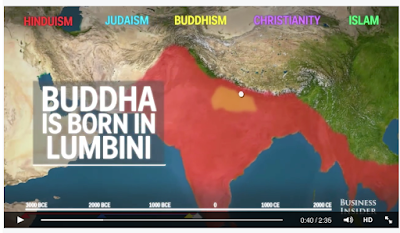Thanks to my son, Greg Weeks, for pointing me to a genuinely amazing map timeline of the spread of the major religions in the world, put together by Business Insider. No matter what your view of religion, we social scientists think of it as a demographic characteristic. It is an unusual one, too, in the sense that you are born into a religion, even though it is not a genetic characteristic. You can change religions, but most people don't--except to go from some particular religion to no religion (which is different, by the way, from being an atheist--a lot of people believe in God, but prefer not to be affiliated with a particular religion). So, population growth, including both natural increase and migration, is intimately associated with the spread of religions. The story is more complex than that, of course, but this is one of those cases in which the role of demography is central.
Click here to go the animated map [which had already been viewed more than 13 million times when I posted this]:
This blog is intended to go along with Population: An Introduction to Concepts and Issues, by John R. Weeks, published by Cengage Learning. The latest edition is the 13th (it will be out in January 2020), but this blog is meant to complement any edition of the book by showing the way in which demographic issues are regularly in the news.
You can download an iPhone app for the 13th edition from the App Store (search for Weeks Population).
If you are a user of my textbook and would like to suggest a blog post idea, please email me at: john.weeks@sdsu.edu

No comments:
Post a Comment